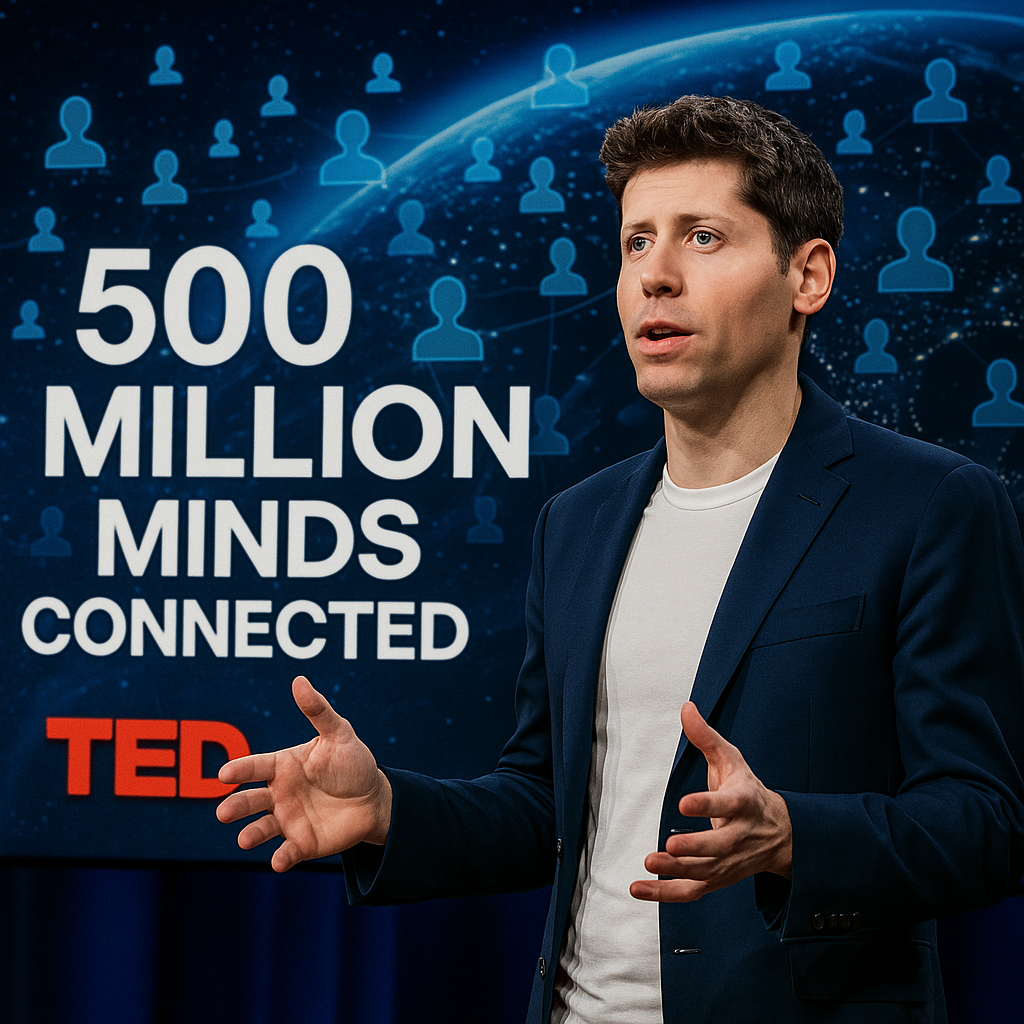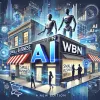
By George Moen | WBN News – AI Edition | April 14, 2025
Sam Altman's TED interview delivered a powerful look inside OpenAI’s evolving vision. From ethical AI to agentic systems, Altman breaks down the challenges and the mind-blowing possibilities of what's next.
FULL ARTICLE: Sam Altman at TED – 12 Key Themes and Insights
✅ Summary: 12 Key Takeaways from Sam Altman at TED
- AI is evolving into a creative collaborator, blending imagination with logic to generate visual and conceptual content.
- AI enhances human productivity, raising expectations but unlocking new capabilities in every profession.
- A new creative economy is emerging, requiring ethical frameworks around consent and compensation.
- OpenAI is joining the open-source movement, aiming to share powerful models with the world responsibly.
- ChatGPT is becoming a lifelong digital companion, not just a chatbot—serving 500 M+ users weekly.
- AI is accelerating science and software, pushing disease research, physics, and development boundaries.
- AI safety must come first, especially as models become capable of misuse or independent action.
- AGI isn’t a moment—it’s a journey, and what matters is managing its exponential growth safely.
- Agentic AI introduces powerful autonomy but raises the stakes for trust, safety, and control.
- AI governance must be democratic, shaped by real-world user values—not just elite summits.
- Altman accepts criticism and complexity, aiming to balance profit, mission, and transparency.
- The future is AI-native, and today’s kids will grow up in a world where superintelligent systems are the norm
1. AI Creativity Is Exploding
Altman showcased Sora, OpenAI’s new visual model that goes beyond simple image generation. It can render conceptual prompts, such as visualizing the difference between intelligence and consciousness. It’s a window into AI's growing ability to think visually.
Takeaway:
AI is moving from tool to creative collaborator—blending imagination with logic to generate novel content.
2. The AI-Augmented Worker
Altman reframed the fear of job loss: yes, AI may replace tasks, but it enhances human potential. Like past tech revolutions, those embracing new tools often unlock new capabilities and opportunities.
Takeaway:
Rather than making humans obsolete, AI raises the bar for creativity and productivity, helping people do more with less.
3. IP, Consent, and the Future of Art
Altman confronted the blurry lines between inspiration and imitation. Open AI avoids using living artists’ names without consent, but AI can still emulate artistic movements or vibes. He proposed future revenue models for artists who opt in.
Takeaway:
AI democratizes art, and a new creative economy is forming, but ethical compensation and consent are critical.
4. The Open Source Debate
Challenged by emerging players like Deep Seek, Open AI is entering the open-source space with a powerful model of its own. Altman confirmed that Open AI was late but is now committed to transparency and contribution.
Takeaway:
Open AI will release a leading open-source model—balancing innovation with responsible oversight.
5. ChatGPT’s Explosive Growth
Open AI now serves over 500 million weekly active users. With features like long-term memory and tool integration, ChatGPT is becoming more than a chatbot—it’s evolving into a personal AI companion.
Takeaway:
ChatGPT is scaling fast, transforming from a Q&A bot into a personalized, lifelong assistant.
6. AI in Science and Code
AI is already supercharging productivity in scientific research and software engineering. Altman hinted at near-future breakthroughs in disease discovery and room-temperature superconductors.
Takeaway:
AI is accelerating innovation across disciplines—from decoding diseases to rewriting the laws of physics.
7. Safety, Risk & Preparedness
Altman dispelled myths about secret AGI and warned about real risks: AI misuse for cyberattacks, bioterrorism, or loss of control via agentic behavior. Open AI’s Preparedness Framework is designed to mitigate such threats.
Takeaway:
The existential risks of AI are real—but Open AI is proactively building safeguards before release.
8. What Counts as AGI?
Despite GPT’s impressive capabilities, Altman says it’s not AGI. True AGI can learn autonomously, improve, and perform any knowledge work. He says the shift will be gradual, not a single milestone.
Takeaway:
AGI is a spectrum, not a moment, and managing its rise safely matters more than naming it.
9. The Rise of Agentic AI
Agentic AI—tools that act on our behalf—are already emerging. OpenAI’s “Operator” can book tables or handle tasks. But with autonomy come higher stakes: trust, safety, and control.
Takeaway:
Agentic AI could be revolutionary—but it demands a new level of trust and accountability.
10. Governance and Public Voice
Rather than relying on elite summits, Altman supports gathering AI safety input from all users, potentially using AI to survey human values and preferences at scale.
Takeaway:
AI governance must be democratic—designed with feedback from billions, not just boardrooms.
11. Power, Profit, and the “Ring of AI”
Altman addressed criticism of Open AI’s shift to a for-profit model. He defended the change as necessary for scale, while reaffirming the mission to benefit humanity. He owned past mistakes and committed to evolving responsibly.
Takeaway:
Altman embraces criticism and complexity—balancing idealism with the real-world needs of AI development.
12. Parenthood and the Human Future
Becoming a father intensified Altman’s focus on legacy. He envisions a future where his son—and all kids—grow up with AI as a natural extension of life, unlocking abundance, speed, and superhuman capabilities.
Takeaway:
The next generation will see AI not as a revolution, but as the default operating system of the world.😊
George Moen – Founder & Publisher, WBN News Global
Contact: gmoen@wbnn.com
TAGS: #Sam Altman #Artificial Intelligence #AGI #Open AI #Agentic AI #AI and Ethics #Future Of Work #TED Talks 2025



